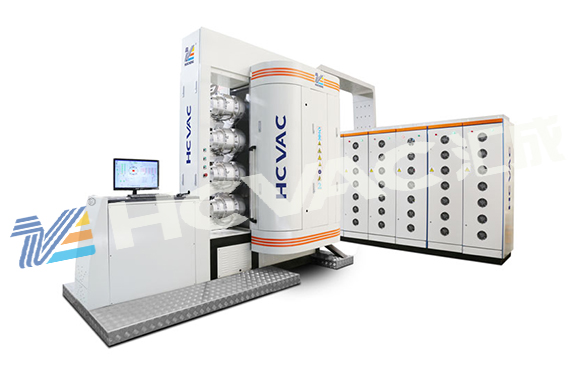Vacuum coating machines are widely used in all walks of life, such as furniture, tableware, decorations, hardware, electronic products, glass, military products, etc., so the products in different fields need different effects, so the coating process used is also Different.

The application of vacuum coater coating is simply understood as the application of metal films or coatings on metal, glass, ceramic, semiconductor and plastic parts by evaporation, sputtering and subsequent condensation in a vacuum environment. Compared with traditional coating methods, vacuum coating is a dry coating, and its main methods include the following, vacuum evaporation. The principle is that under vacuum conditions, the evaporation material is heated and evaporated or sublimated by the evaporator, and the evaporated ion flow is directly directed to the substrate, and a solid film is deposited on the substrate. The high voltage is connected to the cathode to stimulate the glow discharge. Positively charged argon ions strike the cathode to eject atoms, and the sputtered atoms are deposited on the substrate by an inert atmosphere to form a thin film layer. Ion plating. That is, the vacuum ion plating that the dry screw vacuum pump manufacturer has launched. It is in the above two
It is developed on the basis of the coating technology of the vacuum coating machine, so it has both technical characteristics. Under vacuum conditions, the working gas or evaporated species (thin film material) is partially ionized by gas discharge, and the evaporated species or its reactants are deposited on the substrate surface under ion bombardment. During film formation, the substrate is always bombarded by high-energy particles and is very clean.
Vacuum winding vacuum coating machine coating is a continuous coating technology on flexible substrates by physical vapor deposition to achieve some functions and decorative properties of flexible substrates. The above four types belong to the application of physical vapor deposition technology (PVD). Then came chemical vapor deposition (CVD). Thin films are made through chemical reactions. The principle is that at a certain temperature, the reaction gas containing the film-forming material is introduced into the substrate and adsorbed, and a chemical reaction is generated on the substrate to form a nucleus, and then the reaction product is separated from the surface of the substrate and continuously diffuses to form a film. Ion beam deposition coating combines ion implantation and vapor deposition coating technology. It is a technology that uses ionized particles as vapor deposition materials to form thin films with good characteristics at relatively low substrate temperatures.



